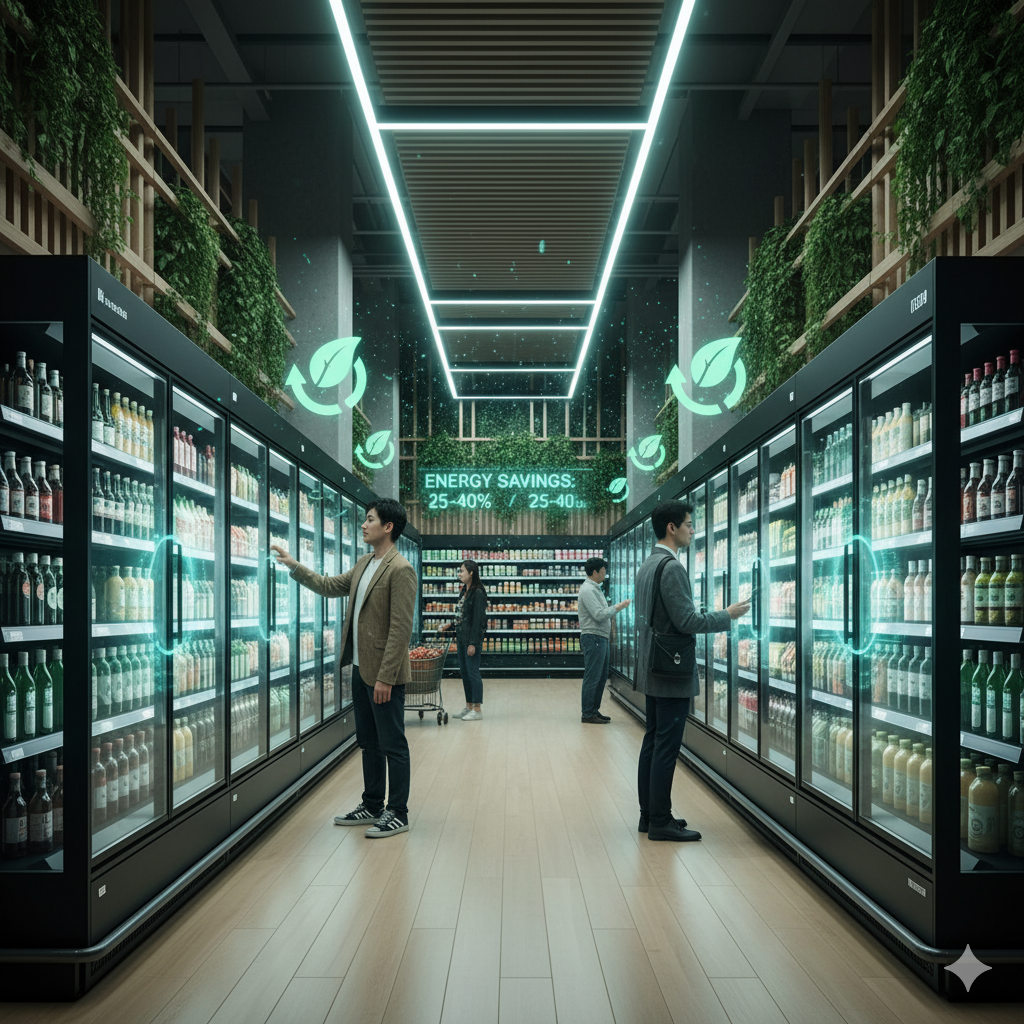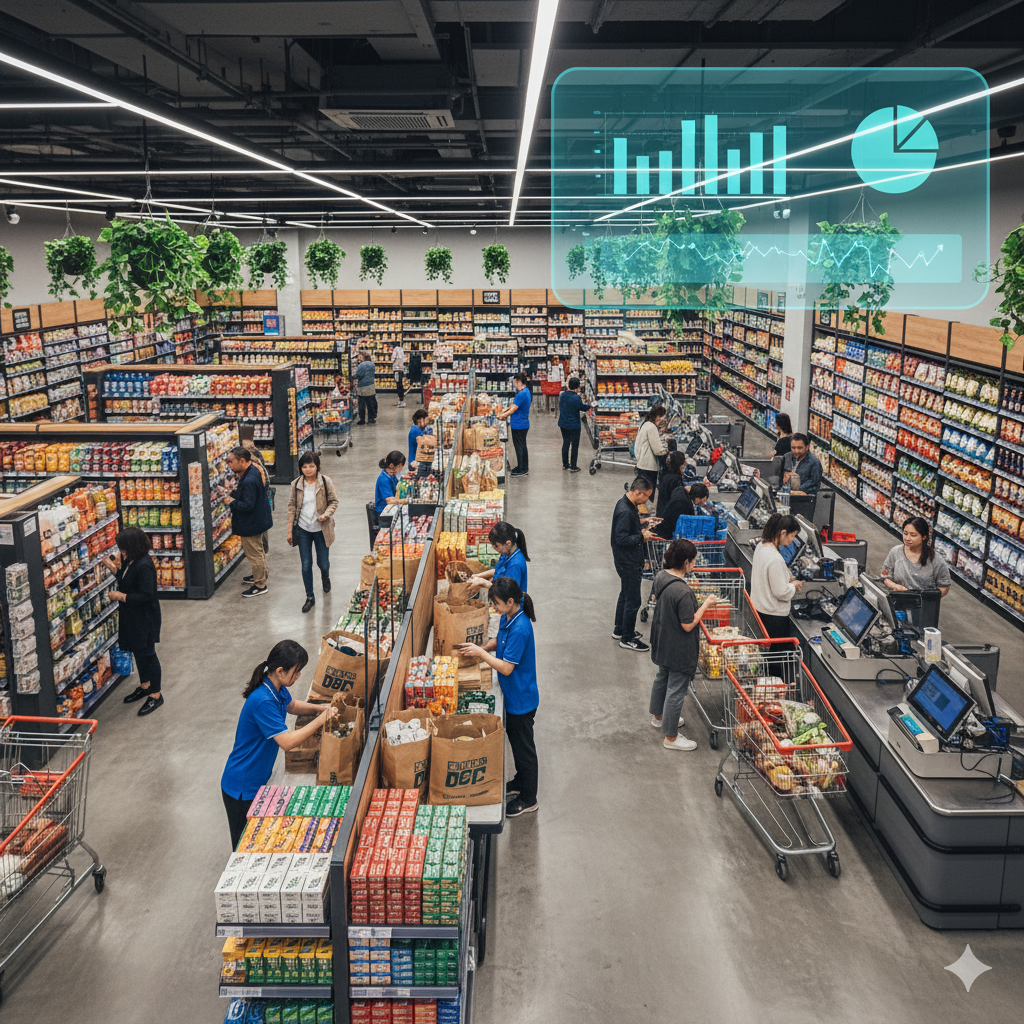Introduction: Asia's Retail Transformation Era
Asia's retail industry stands at the epicenter of a technological revolution. From Singapore's sophisticated electronics markets to Indonesia's booming online grocery platforms, artificial intelligence and retail automation are fundamentally reshaping business operations and customer experiences.
Asia Pacific's retail automation market reached USD 13.81 billion in 2025 and projects to USD 23.63 billion by 2030 (11.34% CAGR). This growth represents survival in competitive markets where customer expectations evolve rapidly.
Key Transformation Drivers:
- Surging e-commerce and social commerce adoption
- Rising labor costs across major Asian economies
- Consumer demand for personalized, seamless experiences
- Sustainability pressures from environmentally conscious shoppers
1. AI-Powered Search & Conversational Commerce
Asian consumers are fundamentally changing how they discover and purchase products. According to Stanford's AI Index, 78% of organizations reported using AI in 2024, up from 55% the year before. Adobe reports a 1,950% year-over-year increase in retail site traffic from chat interactions during 2024's Cyber Monday, indicating massive consumer adoption of AI-driven shopping experiences.
Traditional keyword searches are evolving into conversational queries powered by AI-driven search engines that provide contextual, personalized results understanding cultural nuances and regional preferences—dramatically improving customer engagement and reducing abandonment rates.
Key Benefits:
- Reduced response time to market trends
- Improved inventory turnover rates
- Enhanced customer satisfaction through better product availability
- Lower operational costs through automation efficiency
2. Virtual Try-On (VTO) & Augmented Reality
Virtual try-on technology has evolved from marketing novelty to essential retail infrastructure, particularly in fashion and cosmetics sectors across developed Asian markets where tech adoption rates lead globally.
Modern VTO integration includes automated self-service kiosks, integrated payment systems, real-time inventory updates, and AI-driven recommendations that create seamless customer experiences.
Measurable Business Impact
Retailers implementing comprehensive VTO systems report significant improvements:
- 35-50% reduction in product return rates
- 40-60% increase in customer confidence and purchase completion
- 25-35% improvement in customer engagement metrics

3. Personalized AI Shopping Agents: The Intelligence Behind the Experience
Asia Pacific artificial intelligence in retail market size was calculated to be USD 7.24 billion in 2024 and is anticipated to be worth USD 88.11 billion by 2033, reflecting the massive investment in AI-powered personalization systems.
Modern AI recommendation engines analyze complex behavioral patterns, seasonal preferences, cultural factors, and social commerce signals to deliver hyper-personalized shopping experiences. Advanced capabilities include multi-platform behavior analysis, cultural intelligence for regional preferences, predictive shopping, and dynamic pricing sensitivity.
Sophisticated fulfillment automation handles everything from inventory allocation to shipping optimization, turning personalized recommendations into delivered customer satisfaction.
4. Generative AI Marketing: Scale Meets Personalization
According to Gartner, by 2025, 75% of customer service interactions will be powered by AI, highlighting the rapid adoption of AI-powered customer engagement across retail operations.
Generative AI enables mass creation of personalized marketing content across multiple formats, languages, and cultural contexts essential for diverse Asian markets spanning thousands of islands and multicultural urban environments.

Automated Marketing Capabilities:
- Localized Content Generation: Automatically adapting messaging for different Asian cultures and languages
- Dynamic Campaign Optimization: Real-time adjustment based on performance metrics
- Cross-Platform Consistency: Maintaining brand voice across social commerce, marketplaces, and direct channels
- Performance-Driven Creative: Generating variations based on what resonates with specific customer segments
5. Sustainable & Ethical AI: Meeting Consumer Values
Asia's environmentally conscious consumers drive retailers toward sustainability-focused AI and automation solutions. Smart systems optimize energy consumption, reduce waste, and minimize environmental impact while maintaining operational excellence.
Sustainable Automation Applications:
- Smart Refrigeration Systems: AI-optimized temperature control reducing energy consumption by 25-40%
- Waste Reduction Analytics: Predictive systems minimizing food waste and overstock situations
- Supply Chain Optimization: Route optimization and demand forecasting reducing carbon footprints
- Energy Management: Automated systems optimizing store lighting, heating, and cooling based on real-time conditions
Measurable Environmental Impact:
- Significant reductions in energy consumption
- Decreased food waste through improved demand forecasting
- Improved supply chain efficiency and reduced carbon footprints

6. Market Growth & Industry Leaders: The Competitive Landscape
Current Market Landscape
The retail AI market was valued at $11.6 billion in 2024 and is expected to grow at a 23% CAGR through 2030, reflecting rapid expansion and increasing adoption.
Key market segments show strong growth:
- The Asia Pacific Warehouse Automation Market is expected to reach USD 14.80 billion in 2025 and grow at a CAGR of 17.30% to reach USD 32.87 billion by 2030
- The Asia Pacific Marketing Automation Software Market is expected to reach USD 5.79 billion in 2025 and grow at a CAGR of 11.52% to reach USD 9.98 billion by 2030
Industry Innovation Leaders
- Fujitsu: Advanced POS systems and integrated retail solutions
- Honeywell: Automation hardware and intelligent software platforms
- NCR: Self-checkout systems and digital transformation solutions
- Datalogic: Scanning technology and mobile computing solutions
Fastest-Growing Segments
- Autonomous Mobile Robots for warehouse and inventory management
- Self-checkout terminals enhancing customer experience
- Integrated POS systems for omnichannel transaction processing
- AI-powered analytics platforms for business intelligence
7. Industry Adoption and Future Outlook
Current Adoption Rates
60% of retail companies are planning to boost their AI investments in the near future, and by 2025, 80% of retail executives expect their organizations to adopt artificial intelligence automation.
The retail automation with agentic AI market will reach $40.5 billion by 2025, driven by advances in large language models, computer vision, and autonomous decision-making capabilities.
Emerging Technology Trends
Asian markets are pioneering retail automation approaches leveraging unique regional characteristics:
- Mobile-First Infrastructure: Dominance of mobile payment platforms enabling new retail models
- Rural Technology Expansion: AI systems designed for offline operation extending automation to developing areas
- Collaborative Infrastructure Development: Government-private partnerships creating logistics automation hubs
- Sustainability-First Automation: Leading globally in energy-efficient automated systems
8. Implementation Considerations
Success Factors for Asian Markets
Between 2025 and 2026, market leaders will distinguish themselves not through personalized recommendations alone but through AI-driven business decisions, product innovation, and operational excellence.
Critical Implementation Elements:
- Cultural intelligence solutions adapted for diverse Asian markets
- Integration depth rather than standalone analytics tools
- Sustainability alignment with Asian consumer values
- Speed of implementation for competitive advantage
Market Reality
Nearly two-thirds of consumers still shop in physical stores, with 73% relying on brick-and-mortar locations, indicating the continued importance of integrating AI automation across both digital and physical retail channels.

Conclusion: The Future is Automated and Intelligent
The convergence of AI and retail automation represents more than technological advancement, it's a fundamental shift toward intelligent, responsive, and sustainable retail operations. Asian retailers embracing this transformation today will define tomorrow's competitive landscape.
2025 Success Requirements:
- Integrated AI-automation strategies combining customer intelligence with operational efficiency
- Cultural intelligence for diverse Asian market adaptation
- Sustainability-focused operations meeting environmental expectations
- Continuous innovation to stay ahead of evolving consumer expectations
The future of retail with AI will likely include hyper-personalized shopping experiences, more efficient supply chains, and smarter in-store and online interactions.
The transformation is happening now. The question isn't whether to adapt, it's implementation speed for competitive advantage.
🔍 Technical Glossary
VTO (Virtual Try-On): AI-powered systems using computer vision and AR allowing customers to digitally test products before purchase
Agentic AI: Autonomous AI systems capable of independent decision-making and action-taking in retail environments
CAGR (Compound Annual Growth Rate): Yearly growth rate calculation showing market expansion over time
Conversational Commerce: AI-powered shopping experiences using natural language interaction for product discovery and purchase
📋 Sources
- Mordor Intelligence: Global Retail Automation Market
- Mordor Intelligence: Asia Pacific Retail Automation Market
- Market Data Forecast: Asia Pacific AI in Retail Market
- Stanford AI Index Report 2024
- Gartner AI in Customer Service Predictions
Ready to Transform Your Retail Operations?
Discover how intelligent automation can revolutionize your business.
[Get Started Today] | [AI Solution for Retail] | [Schedule Consultation]
Share this
You May Also Like
These Related Stories

AI in Retail Explained: From Smart Sales to Generative Insights

Amazon & Sephora Prove AI is the Future of Retail Analytics





No Comments Yet
Let us know what you think